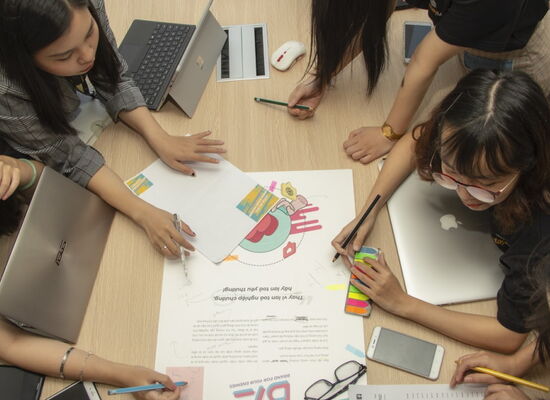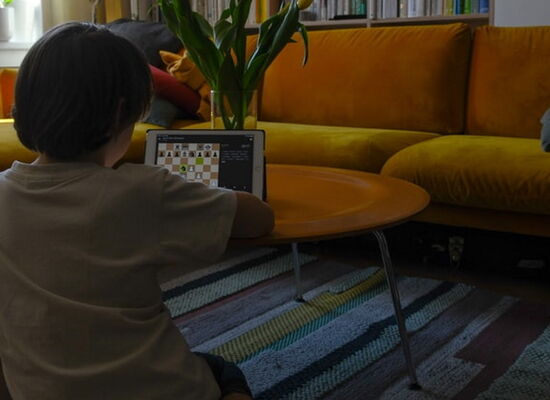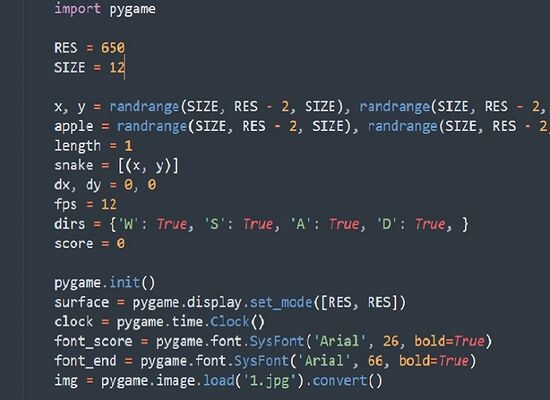Screen Time for Kids: Is it Always a Bad Thing?
26 December, 2020

How can I make screen time less detrimental for my kids?
- Set time for offline activities
- Create a set of house rules for a no-phone-zone
- Help them break the habit
- Find creative and productive activities
- Make screen time a family activity
- Make screen time educational by learning to code!
Screen Time for Kids: Is it Always a Bad Thing?
The dreaded phrase: screen time. Usually preceded by the words ‘excessive’, ‘addictive’, and ‘harmful’, screen time has become the culprit for all sorts of societal ills, from obesity to mental health issues. Some would say that this is just moral panic; blaming the latest technology on the decline of the younger generation is an age-old trend – first it was cinema, then television, and now smartphones. But does screen time really endanger our kids? What are some strategies to help your child moderate their use? And if they just won’t switch off, is there a way to make this time more productive?
What are the dangers of screen time?
Undoubtedly, an excess of screen time does have some downsides. It is not just the content on the screen that matters, but the physiological and psychological effects of too much time spent in front of it.
- Physiological effects
Anyone who has experienced ‘Zoom fatigue’ this year can attest to the headaches that occur after days hunched over a laptop. But that’s not all. Bad posture can cause eye strain and a sore neck, shoulders and back, and an excessively sedentary lifestyle contributes to weight gain – and not just among adults. What’s more, the blue light emitted from screens disrupts the circadian rhythm and melatonin production, which can disturb your child’s sleep.
- Psychological effects
Social media, gaming, and even email apps are based on what’s called a ‘variable reward schedule’. Notifications and refresh buttons are engineered to keep us using as long as possible, operating on the same psychology as a slot machine – you never know if, or when, you’ll be rewarded with the dopamine rush of something new to look at. But unlike gambling, checking your screen only costs time, not money. Less harmful – right? Not necessarily. Constantly switching between websites and apps and rapidly scrolling can affect a child’s ability to concentrate.
Enough of the doom and gloom. What can you do to help?
How can I help my child reduce their screen time?
It is hard enough for adults to regulate their screen time, so what must it be like for children who have grown up with technology at their fingertips? Luckily, there are strategies you can implement at home.
- Set time for offline activities
Helping your kids to regulate their screen time can be a whole family effort. After a day of online schooling, it can be oh-so-easy to transition from a laptop to a videogame. Try and go on a walk to break up the day, or make time for a family games night instead of watching TV. Establish a no-phone-zone for mealtimes and bedtime. Using an alarm clock instead of a phone alarm can help kids to break the cycle of scrolling before sleep and when they wake up.
Most smartphones have features which can help us track our kids’ screen time, complete with a daily breakdown of which websites and apps have been occupying most of their time, and even how many times they picked up their phone! You can set limits for certain apps during certain times of day, which can help at bedtime or during remote schooling. Kids can monitor their own usage, or you can do it through a family account.
- Break the habit
If your child absentmindedly picks up their phone at any moment – advert breaks on TV, waiting in line at the store, a brief lapse in concentration while studying – don’t despair. Deleting social media apps off the home screen, putting the device in a different room during the school day, and disabling notifications can help break the habit.
There is another clever trick we can use. Over the past two decades, phone technology has progressed from a Nokia brick to the latest smartphones, with their huge displays and multi-megapixel cameras. The vibrant colours and crisp graphics are so alluring, that it’s hard to tear your eyes away... Or is it? Switching your phone to greyscale makes it noticeably less attractive, and can help reduce smartphone use.
- Involve them in the discussion!
To avoid the inevitable ensuing argument about screen time, your kids should be part of the discussion. Create a family set of rules that you’re all willing to abide by. If you don’t set an example and never switch off, your kids will emulate your behaviour. Read our article about safe and responsible use of technology for more information about creating an open and honest discussion.
- Encourage productive screen time
All that said, it is important to differentiate between screen time and screen use. If your child just won’t put down their phone, try and shift the focus from passive to active use, from ‘using’ to ‘creating’.
- Creative and educational activities
Encourage your kids to exercise their brain. There are countless apps and websites for art, music and educational games. If they’re not tired of remote schooling, then online courses or lectures are a great way for your kids to learn something new, putting their screen time to good use.
- Screen time together
Screen time doesn’t have to be an individual activity. Watching a film or documentary series as a family is a good way to relax together and spark interesting discussions. What’s more, these long-form screen activities are better for developing concentration and attention spans than social media is. Alternatively, if your child loves gaming, then get family and friends involved for an online escape room or murder mystery.
- Learn to code
At the root of every on-screen activity is a computer programmer. And if your child has a creative streak, then learning to code is the ideal activity. There are a wealth of engaging and educational opportunities available for your kids, who can make apps, websites, games, stories, art, and music with their new coding knowledge, and also acquire transferable skills for the offline world.
Thanks for reading this article and if you have any questions or comments on this topic or coding and STEM in general, please feel free to contact us.
Photo by Brooke Cagle, Thiago Barletta, National Cancer Institute, Pocky Lee, Marvin Kuhn on Unsplash




















